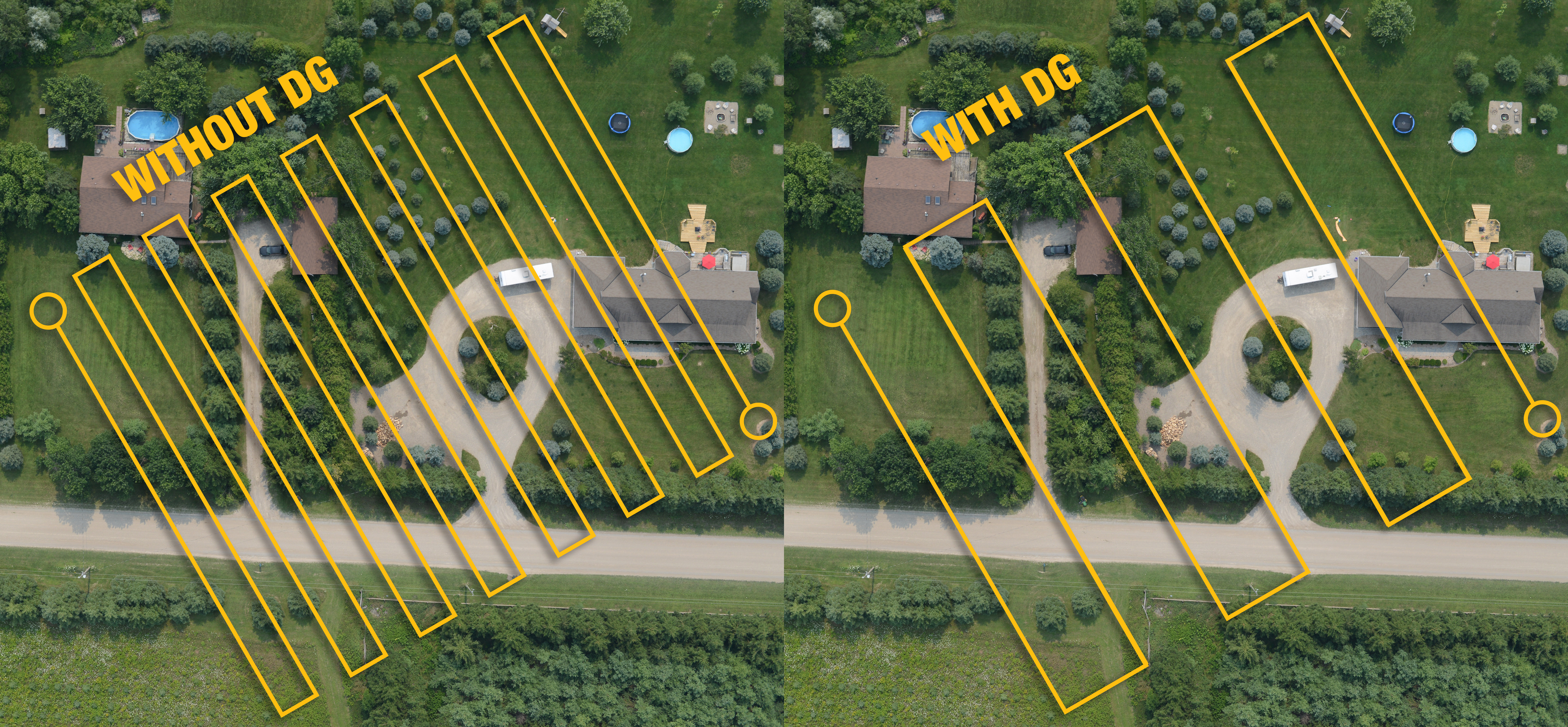
Aerial photogrammetry has traditionally required costly surveying of a network of ground control points (GCPs) to align images and perform aerial triangulation (AT). Using RTK-only position solutions for mapping is inefficient, because it also requires a dense network of GCPs, as well as flying a dense flight pattern to maintain large overlaps between flight lines.
DG (Direct Georeferencing)
To make GCPs obsolete, and to greatly increase the efficiency of mobile mapping and surveying, Applanix has focused on DG. This technique integrates differential GNSS and a low-noise IMU (inertial measurement unit). They are rigidly attached to the mapping sensor and they measure its position and orientation with great accuracy and precision. This allows the location of individual pixels on the ground to be calculated directly.
IMU explained
An IMU measures motion—linear and rotational—and requires no external inputs. An inertial navigation system (INS) integrates IMU data to compute positions that are very stable epoch to epoch but drift over time due to accumulating measurement errors. Combining accurate but susceptible 3D GNSS positioning with stable, high-rate INS motion observations provides high rate, high accuracy measurements of position and orientation (roll, pitch, and true heading), using the strengths of each technology to compensate for the weaknesses of the other.
UAV’S – The Future of Photogrammetry?
Small unmanned aerial vehicles (UAVs) are increasingly the platform of choice for a variety of mapping applications, due to their cost and convenience. UAVs pose special challenges for DG due to their size, weight, and power (SWAP) limitations—because every additional gram of payload increases a UAV’s power consumption, thus reducing the area it can survey in one flight. Additionally, the lower flying height of a survey UAV compared to that of a manned aircraft requires a denser, and hence costlier, network of GCPs.
Applanix DG on UAVs
To meet this challenge, Applanix has produced the Trimble APX-15 UAV, designed specifically for DG on UAVs for mapping and surveying. It also addresses the airframe’s requirements for precision landing and orientation. This single 6 cm x 6.7 cm board, weighing only 60 grams, contains a survey grade, 336-channel Trimble GNSS receiver that supports GPS, GLONASS, BeiDou, Galileo, SBAS, and QZSS and a custom-made IMU designed and built by Trimble. Only one or two GCPs are needed for quality control. APX-15 UAV comes bundled with post-mission office software, POSPac UAV, that produces Directly Georeferenced products for any imaging sensor (digital camera, LiDAR, infra-red, multispectral imaging, even video). The output can also be used to create a LIDAR point cloud or as input into a traditional AT process to help speed up point matching and eliminate issues with auto-correlation. Learn more here.
A Case Study
YellowScan used the APX-15 UAV to build its YellowScan Surveyor, a UAS-lidar surveying solution with high accuracy and dense geo-referenced point cloud data. Geared for the civil engineering and mining space, the system offers 3cm accuracy with 300,000 shots/s and weighs 1.5 kg.